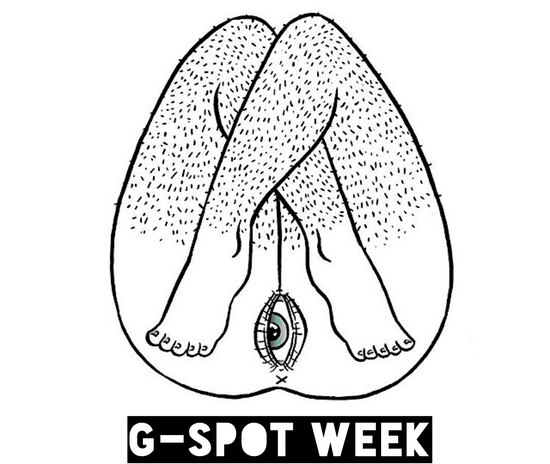For the record, there is no wrong or right time to decide you’re ready to become sexually active, but there is a lot of information you can gain going into sex that can help your health, safety and enjoyment.
Sex education in Australian schools is notoriously incomprehensive and often leaves teens and young adults underprepared for the realities of sex. This may also be accompanied by growing up in a community where one does not feel safe or comfortable asking about the ins and outs of sex. So I welcome you to a short and sweet blog going over some very necessary basics.
Just to disclose, there is no way that one blog, guide or book can educate you on the entirety of sex, but there are so many resources out there for you, so continue to read and converse and gather information if that is what you desire.
Before we begin, a brief note on barriers
First and foremost on our list for ‘Sex 101’ is barriers, such as condoms and dental dams. Condoms and dental dams are the only things that can help protect you from sexually transmitted infections (STI’s). Even if you are on birth control you should always use a barrier with a new partner until you have both been tested for STI’s. Non-penetrative sex can still result in STI’s as you can contract and pass them on through oral sex, so it is safest to use a dental dam when engaging in cunnilingus or analingus, and a condom for fellatio.
You may think that condoms are a ‘one size fits all’ deal, but there is a broad range of sizes and types of condoms to consider. If you have a vulva and are buying condoms for when the time comes it is best to buy a regular fit. If you are buying condoms for yourself or with your partner, then you can better gauge the right size for you.
Most condoms will display their sizing in millimetres somewhere on the packet. Regular condoms tend to be about 53mm in diameter, which should work for most, but to get safest and comfiest wear out of a condom you will want to find the ideal size for you. The next big distinction with condoms is the material that they are made from. The most common you will find are latex condoms, the only real issue with latex is that people can be allergic to the material, causing unpleasant irritation. Note that, it is not uncommon to develop a latex allergy later in life so if you start to become irritated by them suddenly just make the simple shift to non-latex barriers which are usually made from synthetic rubber.
Lastly, it is never a good idea to rely on the other person to have condoms. If you intend to have sex, it is always best to carry some with you. And the same applies for dental dams for vulva owners that do not partake in penetrative sex.
Lube, glorious lube.
Next on our list of important sex tips is: lube. All of us here at Passionfruit are big fans of lube, especially using the right lube for you. Now considering the small selection stocked at grocery stores and pharmacies it may not have occurred to you that there is a lot to know about lube.
There are three major types of lubes, water-based, silicone and oil. Water-based covers all your bases, which is why it’s always good to have some on-hand and to find one that works well for you. Water-based lubricant is the only lube compatible with silicone toys, so be sure that if you’re using lube with a silicone toy that it is water based. The water-based lubricants that you tend to find at grocery stores or pharmacies almost always contain glycerine and or parabens; both ingredients are damaging in the short and long term for the skin and mucous membrane of vaginas. They also tend to be hyperosmotic, which can negatively affect the long-term production of self-lubrication for vulva owners. Shop on the safe side, and buy your lubes from sex shops, and remember to always look at the ingredient list to make sure there isn’t any glycerine and or parabens in it.
Silicone lubricant is the most hypoallergenic lube you can get as your body cannot absorb any of it. Unfortunately, however, silicone lube is not compatible with silicone toys. But, if you aren’t planning to involve any silicone toys then silicone lube is your best friend, it’s silky smooth, long lasting and the least likely to be irritating.
As for oil-based lubricants, I would encourage you to stay away from these, especially if you have a vulva. Aside from taking a long time to exit your body, making it more likely for you to develop thrush or bacterial vaginosis, oil-based lubricants are also incompatible with toys and barriers.
Now, for the most exciting part of the blog – orgasms!
Orgasms plural, as it is possible to have more than just one type of orgasm, but let’s just stick to the basics for now. If you have a vulva there is a possibility of having a clitoral or internal (G-spot) orgasm. Though both orgasms come from the clitoral organ, they are summoned by different activities and one is usually much more familiar than the other.
An internal orgasm comes from penetration alone and is much less likely to be achieved for most. Unfortunately, due to unrealistic expectations from movies and pornography paired with a lack of pleasure education in schools, vulva-owners can feel shame around their inability to achieve an internal orgasm. However, statistics show us that well over half of vulva owners cannot reach climax from penetration alone, this being in no way a fault of their own. This trait is physiological, some are built for it and others aren’t. Even if you can achieve this kind of orgasm, you should still give the clitoris its well-deserved attention. With thousands of nerve endings, you’ll have the most success with pleasure and orgasms if you and your partner focus on the clitoris.
For those with male anatomy, there are also a plethora of orgasms to achieve. Due to heteronormativity and stigma, most men assume that ejaculation is their one and only orgasm. However, if you are willing to explore you may find a great deal of pleasure by stimulating the P-spot (aka the prostate). Now, most of the stigma comes from the location of the prostate which is inside the anus facing towards the testicles. But if you are willing to try, you may find yourself in a whole new world of pleasure and experiencing an entirely new orgasm! And just a rule of thumb for starting off with any anal play, start small and slow, perhaps with a finger or a small butt plug just to see what the sensation is for you and if it's worth exploring more. Secondly, if you’re going to insert anything into your butt, make sure it has a flared base so that you can remove it safely.
Masturbation matters
It feels only natural to talk about actually figuring out what your preferences are after we’ve talked about orgasms. There is no one right way to experience pleasure or to engage in intimacy, every person is completely unique in their preferences and the absolute best way to figure that out is masturbation.
If you are a vulva owner, the external part of the clitoris is most likely going to be where you gain the most pleasure, but there are still subcategories to cover. For instance, what kind of stimulation do you prefer? Does it involve covering a lot of area or is it more pin-pointed? If you have a relatively large clitoral hood is there a particular part that feels better than the rest? Do you prefer it slow or fast? These are all questions that you can answer yourself by exploring during solo play. If you wish to venture inside and find your G-spot, you will most likely find it a few centimeters inside, facing upwards, it will most likely have a rough feeling to it compared to the rest of the vaginal canal. Locating your own G-spot will definitely come in handy when you are communicating with intimate partners in the future.
Not to finish off sounding like a broken record but there truly is no one right way to experience pleasure. You will however be the most successful in having a pleasure-filled intimate life if you feel safe and heard. So have those uncomfortable conversations, figure out what you like, use safety (and safe words), experiment and adventure if that’s what you want to do. Just do what’s right for you and your partner/s.






























